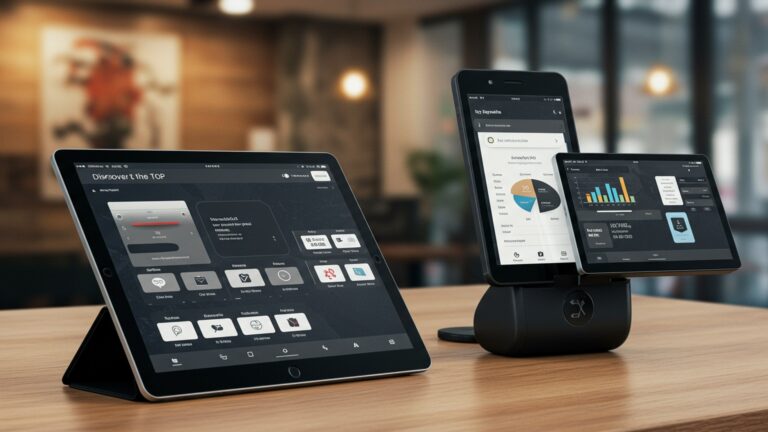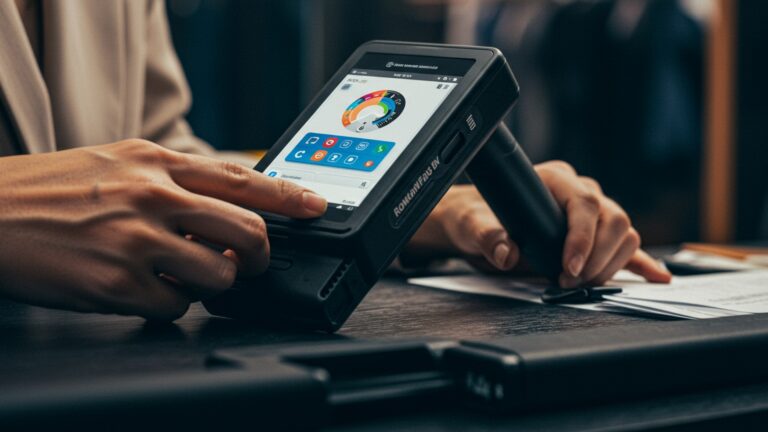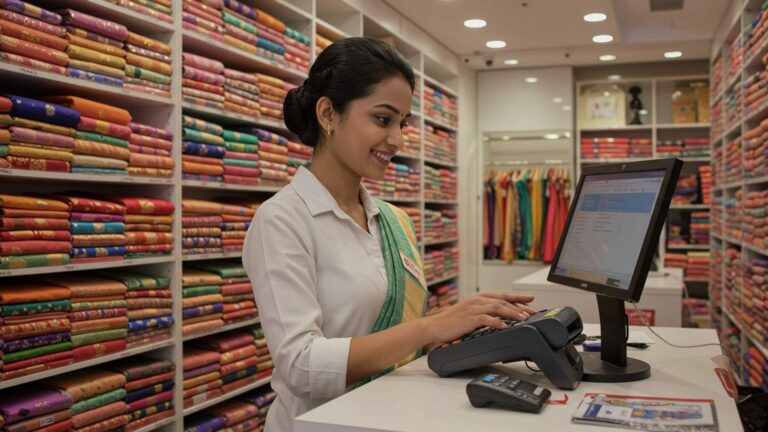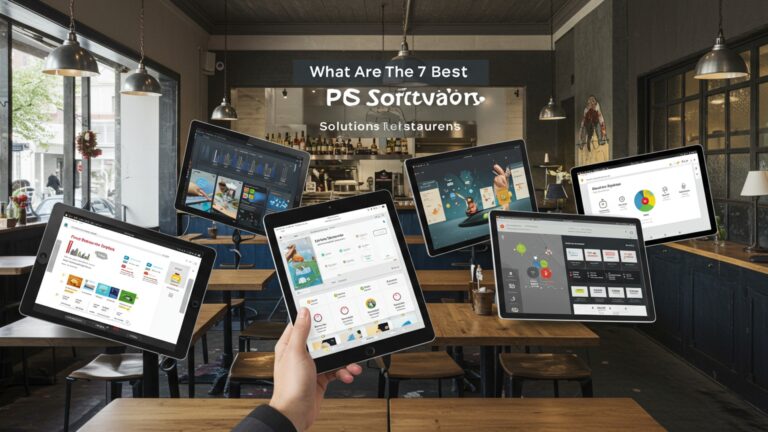Guide to Seamless Restaurant POS Integration 6 Steps for Business Success
In today’s dynamic culinary world, restaurants often wrestle with disparate systems—from online ordering and inventory management to loyalty programs and third-party delivery platforms—creating operational silos and hindering growth. This fragmentation leads to manual data entry, reconciliation nightmares. lost insights, eroding both efficiency and profitability. But, integrating sophisticated Restaurant POS software into your existing ecosystem offers a powerful strategic advantage. Modern, API-first cloud-native POS solutions now seamlessly unify these critical functions, empowering businesses to automate workflows, optimize inventory. deliver exceptional customer experiences driven by real-time, consolidated data.
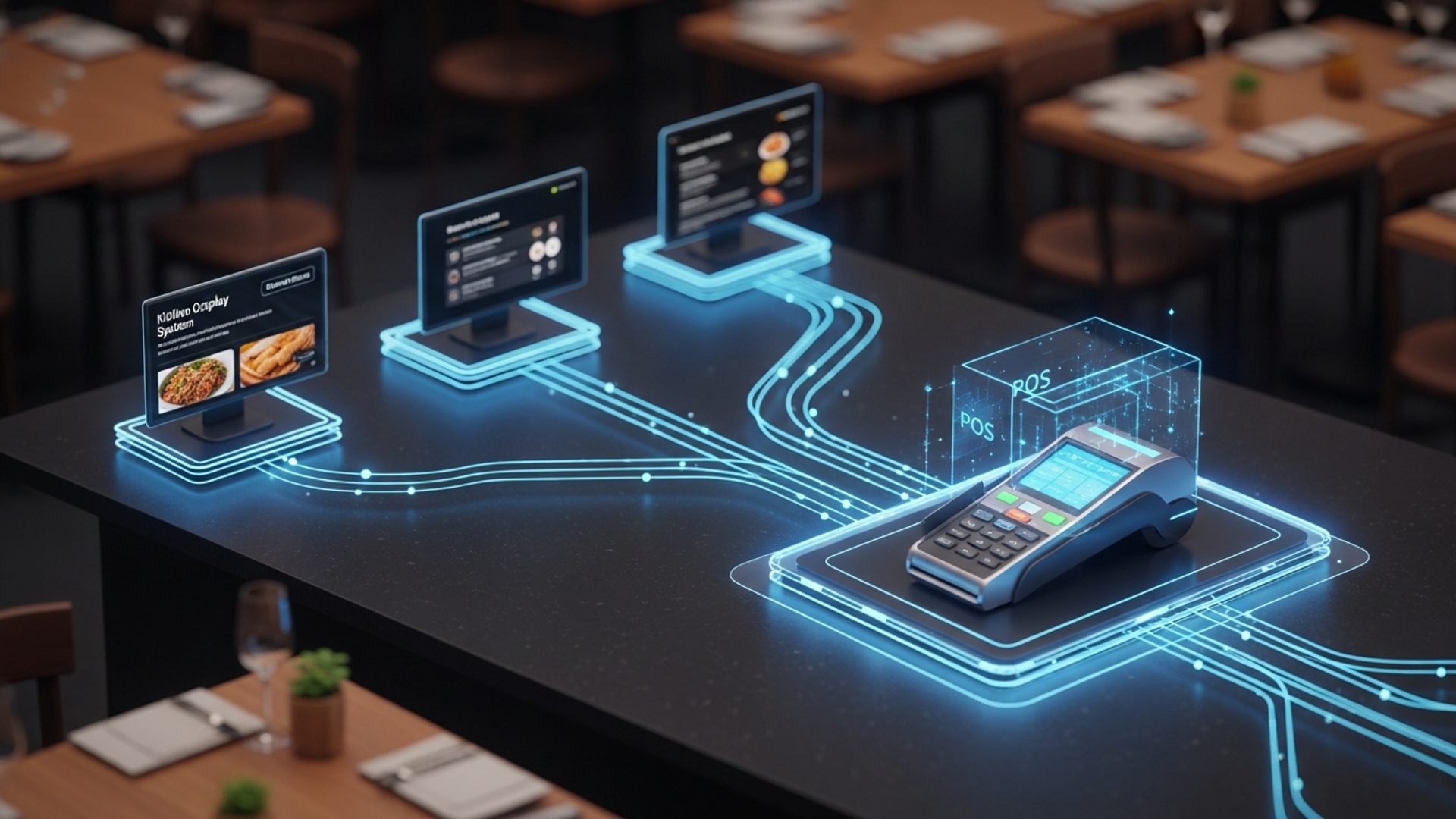
Understanding Restaurant POS Integration: The Foundation for Efficiency
In today’s fast-paced culinary world, efficiency and seamless operations are paramount. At the heart of a modern restaurant’s success lies its Point of Sale (POS) system. More than just a cash register, a robust Restaurant POS software acts as the central nervous system, managing orders, payments, inventory. customer data. But, its true power is unleashed not in isolation. through integration.
What is Restaurant POS Integration?
Restaurant POS integration refers to the process of connecting your core Restaurant POS software with other essential business applications and systems. This can include anything from online ordering platforms and delivery services to accounting software, inventory management, customer relationship management (CRM) tools. employee scheduling systems. The goal is to create a unified ecosystem where data flows freely and automatically between these disparate systems, eliminating manual data entry, reducing errors. providing a holistic view of your operations.
Why is Integration Crucial for Restaurants?
Without integration, restaurants often grapple with data silos, repetitive tasks. disjointed details. Imagine manually inputting online orders into your POS, then separately updating inventory. finally re-entering sales data into your accounting software. This not only consumes valuable time but also introduces a high risk of errors. Integrated systems, on the other hand, offer:
- Streamlined Operations
- Enhanced Accuracy
- Improved Customer Experience
- Better Data Insights
- Cost Savings
Automate data transfer, from order placement to inventory deduction and sales reporting.
Minimize human error by eliminating manual data entry across multiple platforms.
Faster service, accurate orders. personalized loyalty programs.
A unified view of sales, inventory, labor. customer behavior for informed decision-making.
Reduce labor costs associated with manual tasks and prevent revenue loss from errors or stockouts.
The technical backbone of many integrations relies on Application Programming Interfaces (APIs). An API is essentially a set of rules and protocols that allows different software applications to communicate with each other. Think of it as a universal translator, enabling your Restaurant POS software to “talk” to your accounting system, sharing sales data automatically.
Step 1: Assess Your Current Ecosystem and Needs
Before embarking on any integration journey, the first critical step is to conduct a thorough audit of your existing technological landscape and clearly define your operational needs. This isn’t just about identifying what you have. understanding what problems you’re trying to solve and what efficiencies you aim to gain with your Restaurant POS software.
- Identify Current Systems and Their Limitations
- Define Your Integration Goals
- Automating inventory updates directly from sales.
- Syncing online orders directly to the kitchen display system (KDS).
- Automating sales data transfer to accounting software.
- Centralizing customer data for loyalty programs and marketing.
- Streamlining employee time tracking and payroll.
- Involve Key Stakeholders
List every piece of software and hardware you currently use. This might include your existing POS, payment processors, online ordering platforms (e. g. , DoorDash, Uber Eats), reservation systems (e. g. , OpenTable), accounting software (e. g. , QuickBooks, Xero), inventory management tools, loyalty programs. employee scheduling apps. For each, pinpoint its strengths and, more importantly, its weaknesses or pain points. Are you spending hours reconciling data between systems? Are inventory levels frequently inaccurate due to manual updates? Are customer profiles fragmented across different platforms?
What do you hope to achieve with a seamlessly integrated Restaurant POS software? Common goals include:
For instance, one restaurant I advised was struggling with high food waste. Their goal for POS integration was to link sales data directly to their inventory system, enabling real-time stock deductions and automated reorder alerts, thereby reducing spoilage by an estimated 15% within six months.
Gather input from various team members – front-of-house staff, kitchen managers, accountants. even delivery drivers. Their insights into daily workflows and frustrations are invaluable. A server might highlight the inefficiency of manually inputting online orders, while a kitchen manager might point out discrepancies between POS orders and actual ingredient usage.
Step 2: Research and Select Compatible Restaurant POS Software
With a clear understanding of your needs, the next step involves finding the right Restaurant POS software that not only meets your operational demands but also possesses strong integration capabilities. This is where compatibility becomes king.
- Prioritize Integration Capabilities
- Native vs. Third-Party Integrations
- Evaluate Vendor Reputation and Support
- Consider Scalability
When evaluating potential Restaurant POS software, look beyond the core POS features. Crucially, investigate its existing integrations. Does it have native integrations with the online ordering platforms you use? Is it compatible with your preferred accounting software? Does it offer an open API, allowing for custom integrations down the line if needed? A POS system with a robust API is a strong indicator of its flexibility and future-proofing potential.
Some POS systems offer “native” integrations, meaning they’ve built the connection themselves, often resulting in a more seamless and stable experience. Others rely on “third-party” integrations, where a middleware provider or another company builds the bridge between two systems. Both can be effective. native integrations often require less setup and maintenance.
A great Restaurant POS software is only as good as the company behind it. Research vendor reputation, read reviews from other restaurant owners. specifically inquire about their integration support. Do they have a dedicated integration team? What is their typical response time for integration issues? A reliable vendor will offer comprehensive documentation and responsive technical support.
Think about your future growth. Will the chosen Restaurant POS software be able to scale with you as you add locations, expand your menu, or introduce new services? Its integration ecosystem should be able to grow and adapt.
Example Comparison: Integration Approaches for Restaurant POS Software
| Integration Type | Description | Pros | Cons | Best For |
|---|---|---|---|---|
| Native API Integration | POS vendor builds direct connections to other popular software (e. g. , QuickBooks, DoorDash). | High reliability, seamless data flow, often easier setup, direct vendor support. | Limited to integrations offered by the POS vendor. | Restaurants needing common integrations with minimal fuss. |
| Open API / Custom Integration | POS provides an API for developers to build bespoke connections to any system. | Maximum flexibility, highly tailored solutions, future-proof. | Requires technical expertise (in-house or contractor), higher upfront cost and maintenance. | Unique operational needs, large multi-location businesses, specific niche software. |
| Middleware Integration | A third-party platform acts as a bridge between the POS and other systems. | Connects a wider range of software, can manage complex data transformations. | Adds another layer of complexity, potential for additional subscription costs, reliance on middleware provider. | Restaurants with many disparate systems or complex data mapping requirements. |
Step 3: Plan the Integration Strategy
Once you’ve selected your Restaurant POS software, the planning phase is crucial for a smooth rollout. This step involves meticulous preparation, defining scope. anticipating potential hurdles.
- Define the Scope and Order of Integrations
- Develop a Data Migration Plan
- Set Clear Success Metrics
- Reduction in manual data entry time (e. g. , “reduce by 50%”).
- Improvement in inventory accuracy (e. g. , “increase to 98%”).
- Faster order processing times (e. g. , “decrease by 1 minute per order”).
- Increase in customer loyalty program sign-ups.
- Reduction in accounting reconciliation errors.
- Budget and Timeline
You don’t have to integrate everything at once. Prioritize based on your most pressing needs identified in Step 1. Perhaps integrating online ordering and inventory first will yield the quickest wins, followed by accounting and CRM. A phased approach reduces complexity and allows your team to adapt gradually. For instance, a coffee shop might prioritize their loyalty program and mobile ordering integration first, as these directly impact customer retention and order efficiency.
Data migration is often the trickiest part. You’ll need to decide which historical data to transfer (e. g. , customer profiles, past sales, inventory counts) and how to ensure its accuracy. This often involves exporting data from old systems, cleaning it (removing duplicates, correcting errors). importing it into the new Restaurant POS software and integrated systems. Work closely with your POS vendor or integration specialist to comprehend their data import capabilities and best practices.
A common pitfall is underestimating the time and effort required for data cleansing. As one industry expert, John Smith from Restaurant Tech Solutions, often states, “Garbage in, garbage out. Your integration is only as good as the data you feed it.”
How will you measure the success of your integration? Establish quantifiable metrics before you go live. These could include:
Establish a realistic budget that accounts for software licenses, integration setup fees, potential custom development, data migration services. training. Create a detailed timeline with milestones for each integration phase, allowing buffer time for unexpected challenges.
Step 4: Execute the Integration
This is where the rubber meets the road. The execution phase involves the technical setup, configuration. rigorous testing of your integrated Restaurant POS software environment.
- Technical Setup and Configuration
- API Key Exchange
- Mapping Data Fields
- Configuring Webhooks
Depending on the complexity, this might involve your IT team, the POS vendor’s support team, or a third-party integration specialist. It typically includes:
Securely exchanging API keys or credentials between systems to authorize data transfer.
Ensuring that data fields in one system (e. g. , “item_name” in POS) correctly map to corresponding fields in another (e. g. , “product_description” in inventory). This is crucial for accurate data flow.
Setting up webhooks, which are automated messages sent from one system to another when a specific event occurs (e. g. , a new order placed in the POS triggers a webhook to update inventory).
// Example of a conceptual webhook setup // When a new order is completed in the POS: { "event": "order_completed", "order_id": "ORD12345", "items": [ {"product_sku": "SKU001", "quantity": 2}, {"product_sku": "SKU005", "quantity": 1} ], "timestamp": "2023-10-27T14:30:00Z" } // This data would then be sent to the inventory system's API endpoint // to deduct the quantities of SKU001 and SKU005.
Never skip this step. Test every single integration point extensively before going live. Create test scenarios that mimic real-world operations. For example:
- Place an online order and verify it appears correctly in the POS and KDS.
- Process a sale through the POS and check if inventory levels are updated and sales data flows to accounting.
- Apply a loyalty discount and confirm it’s reflected in the customer’s profile.
- Process a refund and ensure all integrated systems reflect the change accurately.
In a real-world scenario, a restaurant testing its new Restaurant POS software with an integrated delivery platform found that modifiers (e. g. , “extra cheese”) weren’t correctly transferring from the delivery app to the kitchen printer. Catching this during testing prevented numerous order errors and customer complaints post-launch.
Prepare for the unexpected. What happens if an integration temporarily fails? Have manual workarounds in place for critical functions (e. g. , a backup method for taking orders if the online ordering integration goes down). Ensure you have clear communication protocols for reporting and resolving issues quickly.
Step 5: Train Your Team and Go Live
Technology is only as good as the people using it. A seamless integration of your Restaurant POS software won’t deliver its full potential if your team isn’t comfortable and proficient with the new workflows. This step is about empowering your staff and managing the transition.
- Comprehensive Staff Training
- Role-Specific Training
- Hands-on Practice
- Understanding the “Why”
- Resource Availability
- Phased Rollout (If Applicable)
- Starting with a pilot group of staff or a specific section of the restaurant.
- Implementing one integration at a time before moving to the next.
- Go-Live Support
Develop a clear, structured training program for all employees who will interact with the new systems. This should include:
Tailor training to different roles (servers, bartenders, kitchen staff, managers, accounting personnel). A server needs to comprehend how to process orders and payments, while a manager needs to know how to pull reports and troubleshoot basic issues.
Provide ample opportunity for hands-on practice in a non-live environment. Create dummy orders, process test payments. simulate various scenarios.
Explain not just how to use the new system. why the changes were made and how they will benefit the team and the business. This fosters buy-in and reduces resistance to change.
Provide easy access to training materials, quick-reference guides. FAQs.
A personal anecdote from my consulting days: A popular bistro integrated a new Restaurant POS software with a tableside ordering system. Initial resistance from veteran servers was high until management hosted a “gamified” training session, where teams competed to process the most complex orders accurately. The friendly competition not only made training fun but also highlighted the system’s speed benefits, leading to rapid adoption.
For larger restaurants or complex integrations, consider a phased rollout. This might involve:
This approach allows for adjustments and fine-tuning without disrupting the entire operation.
On the day(s) of the launch, ensure there’s heightened support available. Have key personnel, vendor support, or integration specialists on-site or readily accessible to address immediate issues and answer questions. A smooth “go-live” experience significantly boosts staff confidence and minimizes early frustrations.
Step 6: Monitor, Optimize. Evolve
The integration of your Restaurant POS software is not a one-time event; it’s an ongoing process of monitoring, refinement. adaptation. To truly leverage your investment, you must continuously assess its performance and be prepared to evolve.
- Continuous Performance Monitoring
- Check Data Integrity
- Gather Feedback
- Optimization and Refinement
- Tweaking data mapping rules.
- Adjusting inventory reorder points.
- Refining reporting dashboards to provide clearer insights.
- Updating training materials.
- Stay Updated and Evolve
- Regular Updates
- Explore New Integrations
- Re-evaluate Needs
Regularly review the success metrics established in Step 3. Are you seeing the expected improvements in efficiency, accuracy. customer satisfaction? Monitor system logs for any integration errors, data discrepancies, or performance bottlenecks. Tools like data dashboards and automated alerts can be invaluable here.
Periodically verify that data is flowing correctly and consistently between all integrated systems. For example, cross-reference inventory counts in your POS with your dedicated inventory software.
Actively solicit feedback from your team. Are they encountering any new challenges? Are there workflows that could be further optimized? Their day-to-day experience is a rich source of insights.
Based on monitoring and feedback, make necessary adjustments. This could involve:
One restaurant, after integrating its Restaurant POS software with its CRM, noticed that email marketing campaigns weren’t as effective as hoped. Upon review, they realized customer segmentation based on purchase history needed refinement. By optimizing their CRM integration to pull more granular data from the POS, they could create highly targeted campaigns, leading to a 20% increase in repeat customer engagement.
Technology is constantly changing. Your Restaurant POS software vendor will release updates. new complementary technologies will emerge. Stay informed about these developments:
Ensure your POS and integrated systems are always running the latest stable versions to benefit from new features, security patches. performance improvements.
As your business grows, you might identify new needs or opportunities for further integration. Perhaps a new AI-driven forecasting tool could integrate with your POS to optimize purchasing, or a smart kitchen equipment integration could automate cooking processes.
Periodically revisit Step 1. Your business needs will evolve. your technology ecosystem should evolve with them.
By treating POS integration as an ongoing strategic initiative rather than a one-time project, restaurants can continuously enhance their operational efficiency, improve customer experiences. maintain a competitive edge in the dynamic food service industry.
Conclusion
Seamless POS integration, as we’ve explored, isn’t just a technical upgrade; it’s a strategic overhaul that profoundly impacts your entire operation. My personal tip, having guided many restaurants through this transition, is to treat the data migration phase with extreme care. A common pitfall is underestimating the complexity of transferring legacy menu items, pricing, or customer loyalty data. Ensure comprehensive testing, perhaps even a shadow run during off-peak hours, especially when integrating new online ordering platforms or Kitchen Display Systems (KDS) – a recent trend seeing rapid adoption to streamline kitchen workflows. This diligence prevents costly operational hiccups post-launch. Embracing modern cloud-based POS systems, with their real-time analytics, transforms mere transactions into actionable insights, a capability central to data-driven restaurant management today. This isn’t just about faster order taking; it’s about understanding peak performance, optimizing inventory. ultimately enhancing the guest experience. Your proactive approach to these integration steps sets the stage for a truly agile and profitable future. Seize this opportunity to elevate your business; the journey to operational excellence begins with this vital step.
More Articles
Tutorial 10 Best Practices for Smooth Restaurant POS System Implementation
How to Choose the Best Restaurant POS System for Your Business Needs
Learn 7 Smart Restaurant POS Features to Boost Your Business Profits
How to Streamline Restaurant Operations Using POS Software and a KDS Guide
Discover 7 Essential Benefits of Modern Restaurant POS Software Solutions
FAQs
What’s this whole ‘POS integration’ thing about for my restaurant?
, it’s about getting your point-of-sale system to ‘talk’ to other crucial software you use in your restaurant, like inventory management, online ordering platforms, accounting tools, or even your reservation system. It links everything up so data flows smoothly between them, making your operations much more connected.
Why should I even bother integrating my restaurant’s POS system? What’s the big deal?
The big deal is efficiency and accuracy! When your systems are integrated, you cut down on manual data entry, reduce errors. get a clearer picture of your business performance. This means faster service, better inventory control, happier staff. ultimately, a more profitable operation with less headache.
Can you give me a quick rundown of the 6 steps mentioned in the guide?
Sure thing! The 6 steps typically involve: 1) Figuring out exactly what your business needs and wants to achieve, 2) Choosing the best integration partners or solutions, 3) Planning out the whole strategy in detail, 4) Actually implementing and connecting everything, 5) Thoroughly testing to catch any snags. 6) Training your team and going live, with ongoing support.
How difficult is it to actually integrate a POS system. how long does it usually take?
The difficulty and timeline can really vary. It’s not usually an overnight job, as it depends on how many systems you’re integrating, their complexity. the amount of data involved. With good planning and the right partners, it can range from a few weeks to several months. the payoff in the long run is well worth the effort.
What kind of common headaches or problems might I run into during this integration process?
You might hit a few bumps like compatibility issues between different software, challenges with migrating old data, or your team needing time to adapt to new workflows. Sometimes, unexpected costs or project delays can pop up. Good planning and clear communication are key to minimizing these kinds of problems.
After the POS system is integrated, how do I make sure my team actually uses it properly?
Training, training, training! It’s super vital to provide thorough, hands-on training for all staff, showing them not just ‘how’ to use the new system. also ‘why’ it benefits them and the restaurant. Ongoing support, clear documentation. celebrating early successes can also help boost adoption and confidence.
Which parts of my restaurant business will see the biggest improvements after a successful POS integration?
You’ll likely see major boosts across several areas. Operations become smoother with faster order processing and fewer mistakes. Inventory management gets way more precise, reducing waste. Customer service can improve with quicker transactions and personalized experiences. And financially, you’ll get better insights for smarter decision-making, thanks to unified data and reporting.

